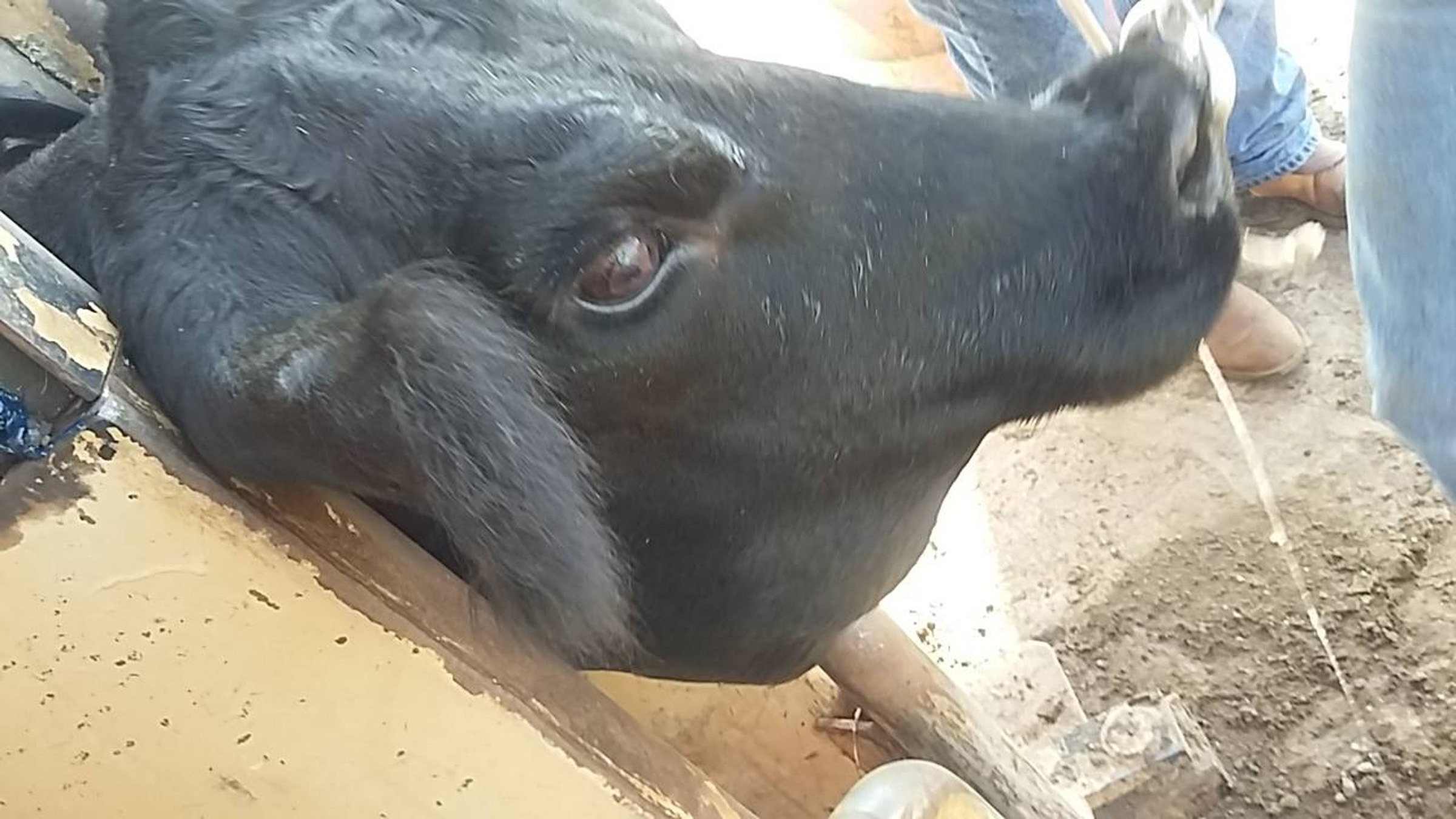Farm & Ranch
Investigating lumpy jaw and wooden tongue

By Jessica Crabtree
Most producers are familiar with the terms lumpy jaw and woody tongue. To others, the two may seem unusual when talking about cattle. However, the condition is real and looks just as it sounds and is as painful as you’d think with lumps on the upper and lower jawbones, hence the name.
First familiarize yourself with the condition. Cattle of any breed, age and sex can be affected by lumpy jaw, although studies show younger cattle seem more at risk. However, a small percentage of animals are affected at any time. Even other species such as pigs and horses can be affected by lumpy jaw.
The specific condition is entitled Actinomycosis. The tricky thing is, cattle can come down with multiple other things that are similar to swollen or lumpy jaw. It is just a matter of contacting your veterinarian as soon as symptoms persist to accurately diagnose.
The cause of lumpy jaw is bacteria. To be exact, Actinomyces bovis, but other organisms may intrude the lesion other than A. bovis. A bovis is a common bacterium found in the mouth of healthy cattle. Issues typically begin when a sharp object, such as a stick or other jagged object, enters the mouth and punctures the lining allowing bacteria to invade further into the tissue.
To read more pick up a copy of the October 2016 NTFR issue.
Farm & Ranch
Hazards of Backyard Poultry

By Barry Whitworth, DVM
Having backyard poultry is a popular agriculture enterprise. According to the United States Department of Agriculture, 0.8 percent of all households in the United States have chickens. People keep chickens for a variety of reasons with table eggs being one of the more common reasons.
Unfortunately, some of these poultry producers are not aware of the hazards that come with keeping poultry because many times they carry pathogens but appear healthy.
Chickens are carriers of several zoonotic diseases. These are diseases that can be passed from animals to humans. According to a recent survey in Pennsylvania, a majority of backyard poultry producers were aware of the dangers of avian influenza. However, this study also revealed that far fewer producers were aware of the risk of possible exposure to Salmonella and Campylobacter.
The lack of knowledge about the hazards of raising poultry likely contributes to the continued issues of Salmonella outbreaks associated with backyard poultry. In 2023, the Centers for Disease Control and Prevention reported 1,072 illnesses of Salmonella linked to backyard poultry, and 272 of those patients required hospitalization. Oklahoma reported 43 individuals with the disease.
To read more, pick up a copy of the April issue of NTFR magazine. To subscribe by mail, call 940-872-5922.
Farm & Ranch
Ag Elsewhere: Wyoming

By Tressa Lawrence
Babies are tucked away in every nook and cranny. Many ranchers across Wyoming have baby animals popping up all over this time of year.
Farm & Ranch
Ag Elsewhere: Montana

By Lindsey Monk
Another load of grain in to keep feeding the calves until the green grass can really start popping.
-

 Country Lifestyles1 year ago
Country Lifestyles1 year agoScott & Stacey Schumacher: A Growth Mindset
-

 Equine7 months ago
Equine7 months agoThe Will to Win
-

 Country Lifestyles7 years ago
Country Lifestyles7 years agoStyle Your Profile – What your style cowboy hat says about you and new trends in 2017
-

 Country Lifestyles4 years ago
Country Lifestyles4 years agoAmber Crawford, Breakaway Roper
-

 HOME7 years ago
HOME7 years agoGrazing North Texas – Wilman Lovegrass
-

 Country Lifestyles7 years ago
Country Lifestyles7 years agoDecember 2016 Profile, Rusty Riddle – The Riddle Way
-

 Country Lifestyles8 years ago
Country Lifestyles8 years agoJune 2016 Profile – The man behind the mic: Bob Tallman
-

 Outdoor9 years ago
Outdoor9 years agoButtercup or Primrose?






